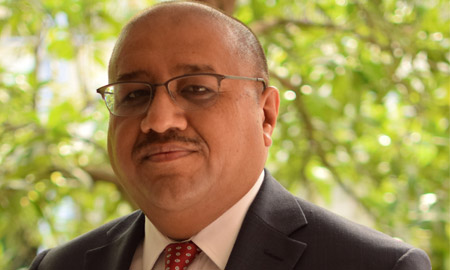 By Sujeev Shakya (24 December 2017) – While the people of Nepal were celebrating Dashain, an annual festival in October, the leading two Communist Parties, the United Marxist Leninist and Maoist United Center, announced they would form a Left Alliance for the upcoming federal and provincial elections. The move came as a surprise to many — including the Nepali Congress (NC), the largest party in the dissolved parliaments, and India — but proved successful.
By Sujeev Shakya (24 December 2017) – While the people of Nepal were celebrating Dashain, an annual festival in October, the leading two Communist Parties, the United Marxist Leninist and Maoist United Center, announced they would form a Left Alliance for the upcoming federal and provincial elections. The move came as a surprise to many — including the Nepali Congress (NC), the largest party in the dissolved parliaments, and India — but proved successful.
After totaling the two-phase vote on November 26 and December 7, the Left Alliance has close to a two-thirds majority in federal parliament.
The campaign agenda
The Left Alliance’s agenda comprised only a few key elements. First, they stood on a nationalistic platform, which in Nepal is touted as anti-India. India is seen as meddling in Nepal’s internal affairs — one particular example is when it instituted a blockade on Nepal in September 2015.
The proposed Prime Minister, K P Oli, was the serving Prime Minister when India, dissatisfied by a few provisions of the Nepali constitution, imposed a blockade on the borders. Being landlocked, Nepal is dependent on India’s seaports and transit routes and India has a monopolistic control over supply of petroleum products. During the blockade, Nepalis faced tremendous hardship due to limited supply of daily consumable and petroleum products.
During the campaign, the Left Alliance alleged that the opposition Democratic Alliance led by NC was allegedly supported by India and continuously questioned why NC did not speak up during the blockade.
Second, the Left Alliance made prosperity of Nepalis a priority, promising everything a populist government that believes in distributive economics can think of. They took credit for relieving the Nepali public of daily 18-hour power cuts and even managed to take credit for every infrastructure project in the pipeline. (The electricity supply was through better management of the state utility, which was showcased during the election campaign.)
The Left Alliance knew that NC was at its weakest juncture in history with intra-party quarrels and a leader with a terrible public image remembered for having split the party and joining the former King in 2002 when the days of the Shah dynasty were numbered. In the local elections held in May, June and September 2017, the major left parties realized that they could have fared better if they would have made a pre-election alliance. Therefore after 19 years, the two communist parties finally agreed to take NC head-on when it was at its weakest.
Elections brings political transition to an end
The last parliamentary elections were held in 1999, the same year when the Maoist insurgents formed the People’s Army to fight the state. In 2001, Nepal suffered a shocking royal massacre, when an errant Crown Prince killed family members leading to the appointment of the only male survivor of the Shah dynasty, Gyanendra, as King. The same year, Pushpa Kamal Dahal, Prachanda was declared the undisputed leader of the then-underground Maoist Party and he was in direct command of the People’s Liberation Army.
In 2002, the King sacked the current Prime Minister Sher Bahadur Deuba as incompetent after the parliament was dissolved. The King’s political ambition pushed him to take direct control under absolute monarchy in February 2005. The political parties then decide to take on the King to end the 240-year Shah rule by joining hands with the underground Maoists through an agreement. In April 2006 through a popular uprising forced the King to reinstate the dissolved parliament and then the journey to electing a constituent assembly began.
The first constituent assembly elections held in 2008 could not deliver a constitution in four years and was dissolved, leading to a new constituent assembly elections in 2013. It was only the Gorkha earthquake of April 2015 that forced the politicians to push for delivery of a constitution in September 2015.
The elections for federal and provincial governments is the first step towards implementing the new constitution and expected to end the two-decade-long transition that saw more than 20 Prime Ministers, many of them becoming PM more than once.
Will stability deliver economic growth?
In the aftermath of the elections, Nepalis expect to auger in an era of political stability. The majority win of the Left Alliance must deliver much needed development in terms of infrastructure growth and economic prosperity.
Nepalis rely on the state for healthcare, education and infrastructure development, wanting it to be close to free. With many now-elected politicians promising freebies on the campaign trail, will a country that remains one of Asia’s only two “least-developed countries” deliver with an annual budget of less than $6 billion for 28 million people? With more than 1,500 Nepalis leaving migrating to work in Middle East and Malaysia, will domestic jobs be created that would keep people in Nepal? Will an alliance that has won votes based on inward looking nationalism bring about economic reform that will attract foreign investment so it can maintain 8% growth to achieve $2,500 per capita income by 2030? Will politicians be tempted to continue with nepotism in the quest for increasing personal fortunes or will they change to consolidate their mandate in the next elections in 2022?
These are the questions that must now be asked — and answered.
This article first appeared in The Forbes.


